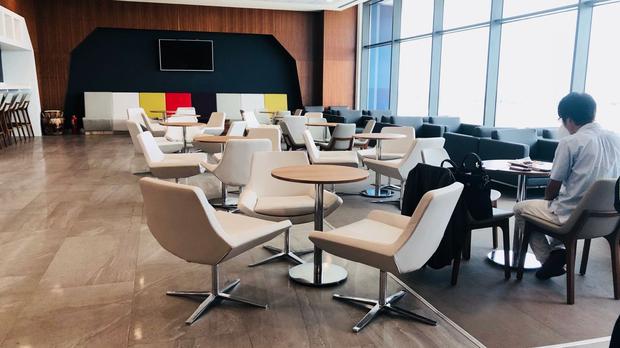
ACCRA, (ANA) – Ghana Airports Company Limited (GACL) Managing Director, John Attafuah, is an animated man to whom words come freely, quickly and eloquently. But even he has to pause and gasp for a few seconds though, as he describes the impact the spanking new Terminal 3 at Accra’s Kotoka International Airport has had on Ghanaians.
The stunning, modern new terminal at Kotoka, built at a cost of $275 million, opened on 15 September 2018 and for proud Ghanaians, life has not been the same again.
“The public reaction of Ghanaians when they saw and felt their new airport for the first time was beyond my imagination,” Attafuah said with great pride and emotion in an interview with a group of South African journalists at his Accra offices this week.
Indeed Accra’s new Kotoka airport is an impressive facility. Its sophisticated, futuristic look and modern trappings with its plush business lounges, retail spaces and state-of-the-art equipment are the equal of any airport in the world, JFK, Heathrow or Schipol included.
GACL delivered the airport in close collaboration with the Airports Company of South Africa (ACSA), with whom it entered into a five-year technical and airport management co-operation agreement that started on 1 March 2014 and is due to end on 28 February 2019.
And the new Kotoka Terminal 3, not surprisingly, bears much of the hallmarks and the finest qualities of ACSA’s OR Tambo International Airport, Cape Town International Airport and King Shaka International Airport in some of South Africa’s major cities.
The collaboration between GACL and ACSA is the perfect symbol of African excellence and co-operation to deliver a product of truly breathtaking global class.
ACSA provided technical advisory services during the construction, by some of Turkey’s finest infrastructure experts, of Terminal 3. The ACSA team also provided operational readiness and airport transfer assessment for Terminal 3, a key requirement before an airport terminal is commissioned.
Other areas of close co-operation between GACL and ACSA were in the areas of aviation services, airport operations, commercial services, aviation security and professional services in line with ACSA’s strategic pillars to run and develop airports globally and to grow its increasing international footprint as a world airports company leader.
Attafuah, a former oil company executive tasked in March 2017 with seeing this crucial project to fruition by the Ghanaian government, is glowing in his praise for the massive role played by ACSA.
“We would not have had this level of airports company knowledge and expertise had we gone beyond the continent. It was easy for ACSA to advise us because they knew exactly what we faced,” said Attafuah.
“They helped us identify the potential pitfalls and took our team through the development of the over 140 standard operating procedures of each and every aspect of the new terminal. For every major simulation, the entire ACSA team was on the ground with us from 6 am to 10 pm.
“The level of support ACSA provided us Ghanaians was invaluable and we can’t say that enough. We are indebted to them and really want to thank them for their support.”
While the fruits are there for all to see, the project had its major challenges, the depletion of the funding required being the most critical.
To complete the project the GACL took out a $400 million loan, $275 million of which was spent on Terminal 3, and the rest on a new airport project in Ghana’s Volta Region and the upgrading of existing airports in the cities of Kumasi and Tamale.
A total of $195 million came from commercial lenders such as Nedbank, the Qatari National Bank, Standard Chartered and Barclays and a further $205 million came from the African Development Bank, the Development Bank of Southern Africa and the Ghana Infrastructure Fund.
“We need to recoup this and for that to happen the airport must be busy. We aim to make Ghana the major hub of the West African sub region and we are working hard on attracting new airlines, developing new routes and encouraging airlines to improve their frequency,” said Attafuah.
“We believe in this project and that’s why we embarked on it. It is up to us now to ensure our dream comes true. We delivered the terminal, we must now maintain it, market it, protect it and build on it to achieve higher heights. We have no doubt we will be able to achieve the objectives we’ve set.”
At its height Terminal 3 will be able to handle 5 million passengers a year, with the capacity of handling 1,250 passengers an hour.
–
African News Agency (ANA); Editing by Moses Mudzwiti
iol.co.za





